Don't wanna be here? Send us removal request.
Photo

People Coming to Twitter to see if WhatsApp is actually down🤣🤣🤣 #WhatsappDown https://www.instagram.com/p/CkIaaswNzw6/?igshid=NGJjMDIxMWI=
0 notes
Photo

WHY DOES DALIT COMMUNITY CONSIDER " POONA PACT": A GANDHIAN BETRAYAL ? It is said that Dr Baba Sahab #ambedkar was crying, when he was literally blackmailed into signing "POONA_PACT" due to #gandhi "satyagraha"(forcing others to toe his line through threat of suicide through hunger) #jaibhim (at Dr. Ambedkar College, Diksha Bhumi, Nagpur) https://www.instagram.com/p/Ci7EWAgtNRd/?igshid=NGJjMDIxMWI=
0 notes
Photo

It's really the best ever book of #gulamgiri and everyone must read this and should get to know what is right and wrong! You can follow @ra.myag (me) for more info. #jaybhim (at Dr. Ambedkar College, Diksha Bhumi, Nagpur) https://www.instagram.com/p/Ci5LNj4tQpG/?igshid=NGJjMDIxMWI=
0 notes
Text
A thread on Hindi imposition debate. #HindiDiwas
At the time of India’s Independence, Hindi was still a language in the making. The geographical reach of Hindi was not bigger than that of Telugu or Bengali. Hindi was not the mother tongue of people in Awadh, Braj, Mithila, Magadh, Bundelkhand, Ahirwal, Nimad, Marwar or Mewar.
In these areas, each language is unique and it is not easy for a Maithil person to understand Bundelkhandi or Brajbhasa.
As Hindi was not standardised in 1947, the government tasked the Central Hindi Directorate to do so.
After much deliberation, it was decided to use roman numerical. It is still not settled whether to use Persian/Arabic/Turkic words in Hindi or not and what is better, Sanskritised Hindi or Hindustani.
Echoing this sentiment, former CM of Madras Presidency and Rajya Sabha member P. Subbarayan presented a dissent note to the 1st Official Language Commission.
Subbarayan said “People who possess as their mother tongues well formed languages with a continuous literary history of over thousand years and more like Bengali, Assamese, Oriya, Marathi, Gujarati, Telugu, Tamil, Kannada and Punjabi feel very difficult about accepting this new policy about official language, particularly when by direct and indirect means, it is attempted to be forced upon them.”
Hindi was given priority over other languages in the Constitution.
Article 351 says, “It shall be the duty of the Union to promote the spread of the Hindi language, to develop it so that it may serve as a medium of expression for all the elements of the composite culture of India and to secure its enrichment by assimilating without interfering with its genius, the forms, style and expressions used in Hindustani and in the other languages of India specified in the Eighth Schedule, and by drawing, wherever necessary or desirable, for its vocabulary, primarily on Sanskrit and secondarily on other languages.”
This idea of making Hindi “a medium of expression for all the elements of the composite cultures of India” is flawed and deeply contested. Hindi was accorded this coveted position by the Constituent Assembly and not by Parliament consisting of elected representatives.
North Indian Hindi-speaking members of the Congress party in the Constituent Assembly insisted that Hindi was accepted as the Official Language of the Indian Union.
In the post-Independence era, Hindi grew but the growth was not organic. The Union government spent money to promote Hindi especially in non-Hindi-speaking areas so that it may be accepted as the link language nationally.
The Department of Official language was given specific task that involved “co-ordination in all matters relating to the progressive use of Hindi as the Official Language of the Union, including administrative terminology, syllabi, textbooks, training courses and equipments.
There is a Hindi training programme in place for central government employees since 1955.
The presidential order dated 27 April 1960 said “in-service training in Hindi may be made obligatory for Central Government employees who are aged less than 45 years.
The Union government is running these programmes across the country. In government departments across India, Hindi Day is celebrated and essay and typing competitions are held. Government rewards good performers in these competitions.
There is an Official Language Wing in the law ministry, which translates all government bills in Hindi. At the same time, no incentive is given to Hindi-speaking employees for learning other Indian languages.
In the field of education, the 1st Official Language Commission had put much emphasis on introduction of Hindi as compulsory subject in secondary schools in all non-Hindi areas, so that the next generation of Indians may be Hindi-knowing, It brushed aside the suggestion that students in Hindi-speaking areas in secondary schools should compulsorily learn another Indian language.
The Commission instead suggested that options for these students should include languages like Sanskrit, French, German, and Russian.
This was the mainstream idea related to the language policy just after the Independence that non-Hindi students must learn Hindi, but Hindi students should study Sanskrit or some foreign language.
Mass media also played a crucial role in the proliferation of Hindi. Until the 1990s, the Union government was in sole control of radio and television. Television broadcasting started in 1965 and till the mid-1990s, most of the programming was in Hindi.
Only after regional stations were established that things started to change. But by that time, the foundation had already been laid. During 1983-1991, many popular programmes and serials were launched in Hindi.
Mythological serials like Ramayana and Mahabharata became powerful vehicles to carry Hindi with the religious massaging.
2 notes
·
View notes
Text

NEET की Topper OBC है। 4th Rank पर भी OBC है। ये General, Unreserved Category की Topper हैं।
OBC का Time आ गया है। मेहनतकश, किसान, पशुपालक, कारीगर, छोटे कारोबारियों की जमात फिर से सामने आ गई है। सांस्कृतिक-मानसिक-धार्मिक गुलामी से मुक्ति बहुत फ़ायदेमंद है।
यही मेहनतकश जमात भारत को महान बना सकती है।
सवर्ण लोगों में दम होता तो अपने वर्चस्व वाले दौर में बना चुके होते।
OBC तो 2008 के बाद शिक्षा में बड़े पैमाने पर आया है। असर दिखने लगा है। ये अभी एक झलक हैं। लेकिन ये छाती पिटकर, गर्व से केहने वाले, अंधभक्त, धर्म बचाने वाले हिंदू नहीं हैं।
Congratulations... तनिष्का यादव
1 note
·
View note
Text
A Thread
The story of #NDTV ownership involves media mogul Rupert Murdoch, the infamous Indiabulls, fugitive liquor baron Vijay Mallya, Mukesh Ambani, and now Gautam Adani who bought it from him.
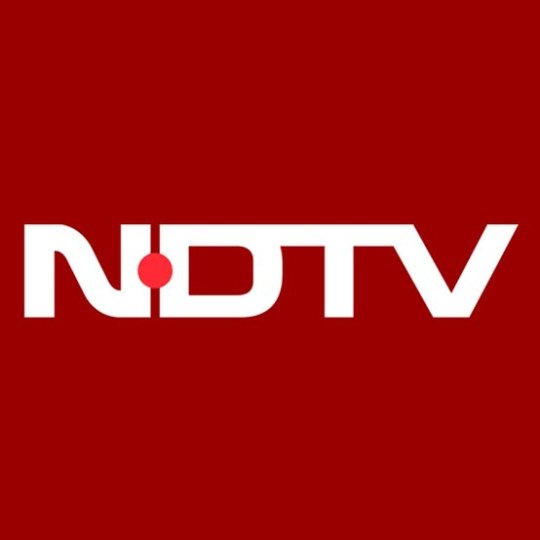
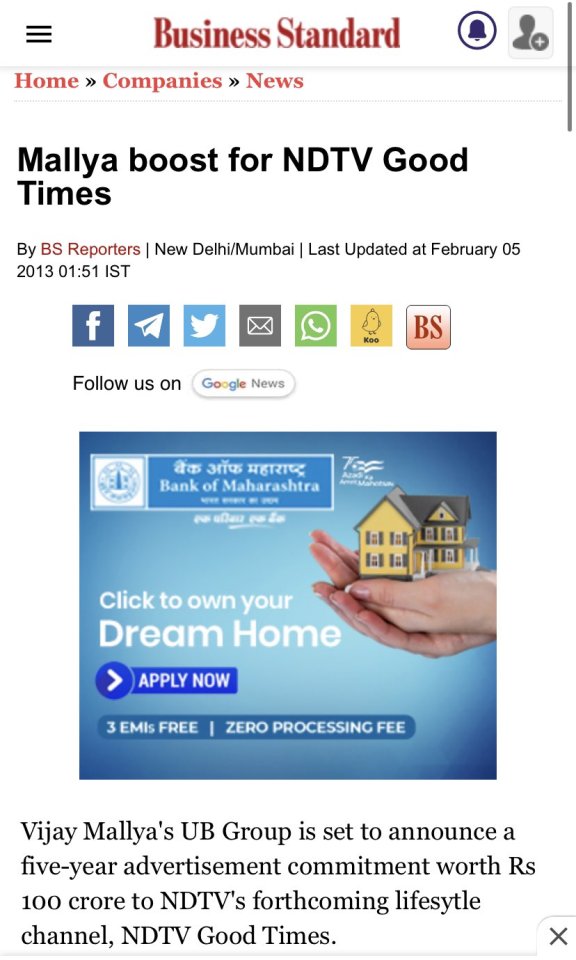
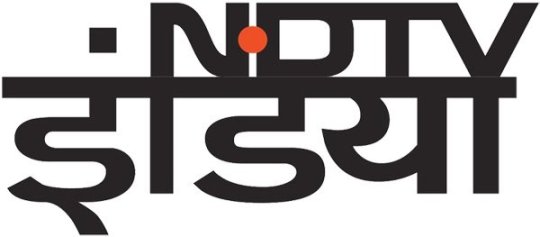
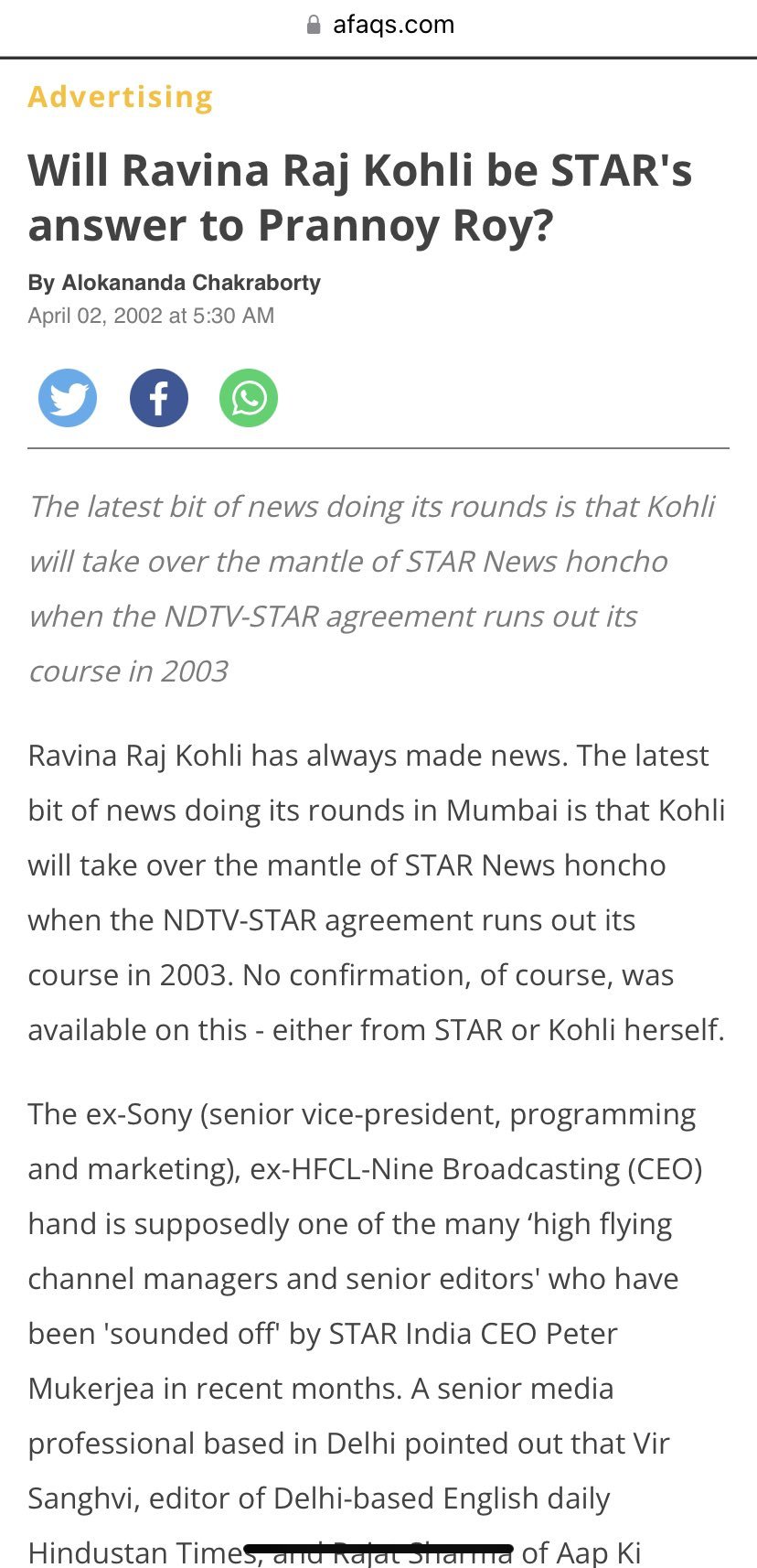
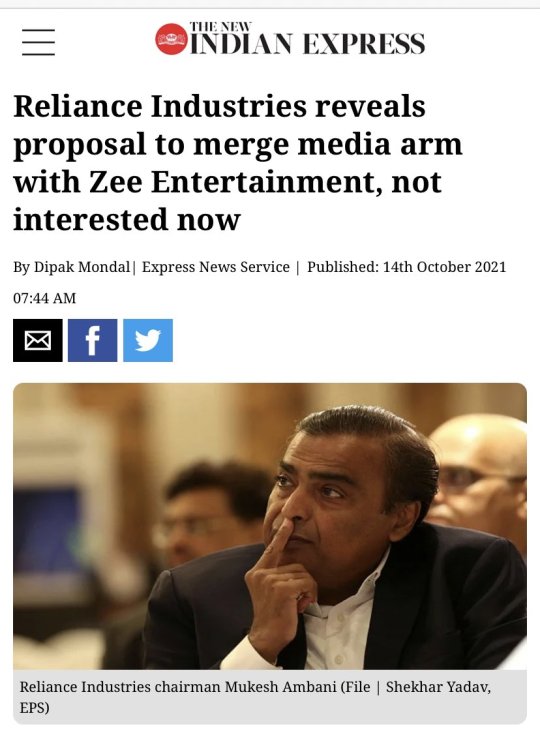
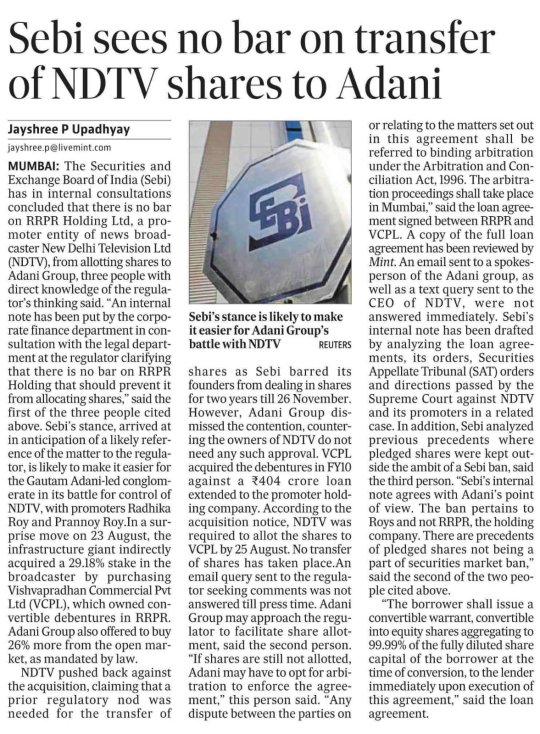
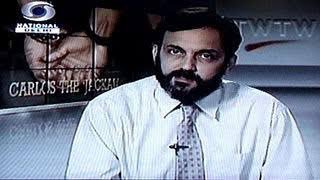
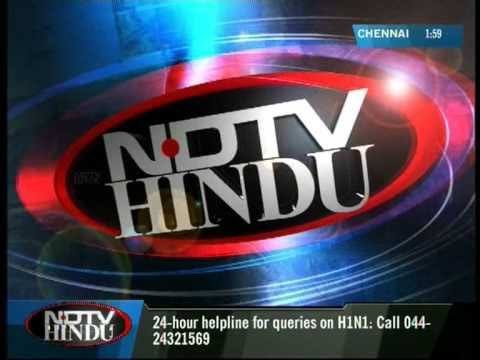

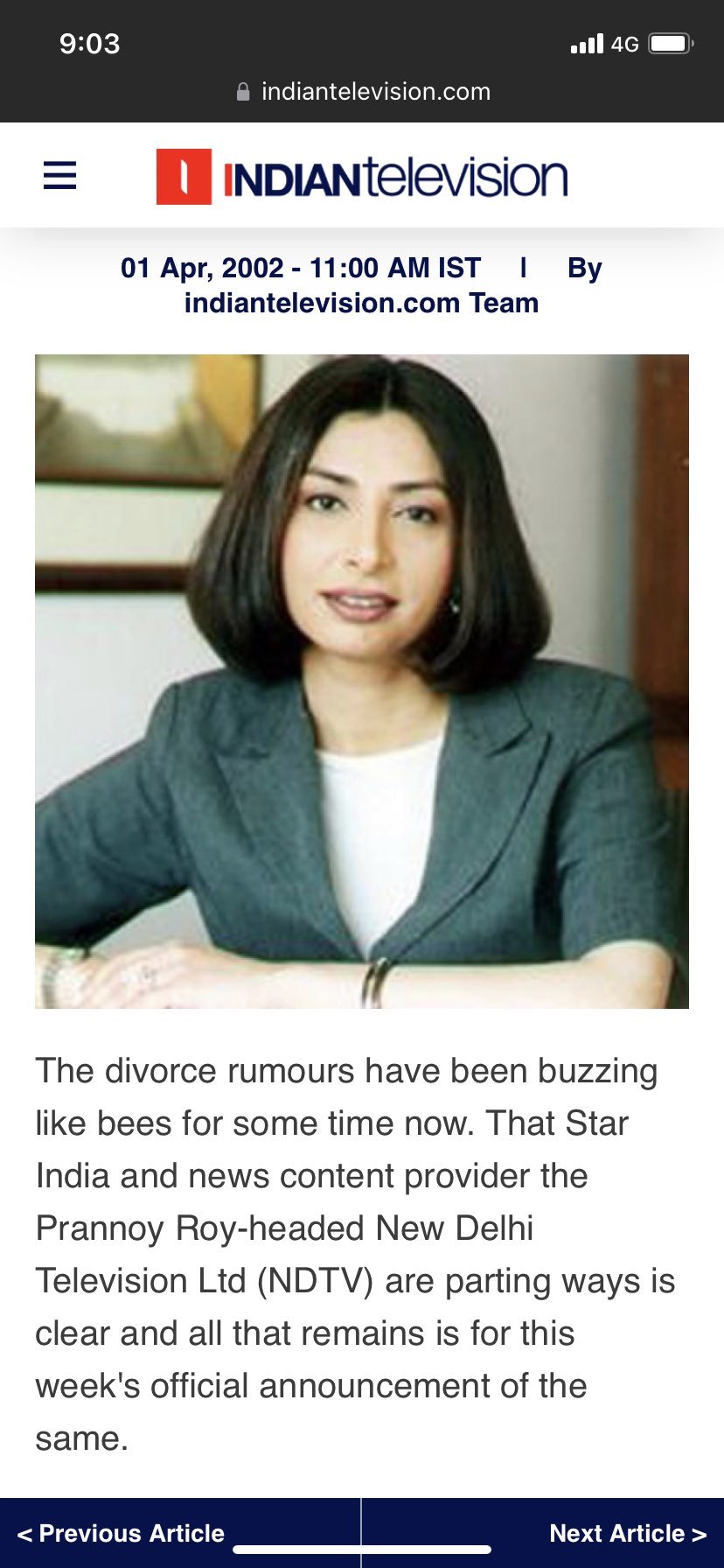
NDTV’s ownership changed hands many times over the years but @ndtv has always sat pretty in corporate Godi (lap). The story goes like this:
In the late 1980s and early 1990s, when Doordarshan started commissioning news/current affairs shows to private companies, Prannoy Roy and Radhika Roy took the opportunity and started making current affairs programs for it using DD’s resources.
After a policy shift, when private news channels got the permission to downlink, many companies including NDTV came into the channel business. But Roys weren’t the investors. Rupert Murdoch’s company STAR put in the money and NDTV provided the content.
Thus, the NDTV-Star alliance took shape in 1998. The name of the channel was Star News. Pranay Roy had found a filthy rich Godi.
The contract was for five years. But NDTV failed to provide good exciting content. Star News was losing viewership. NDTV employed kids of many top bureaucrats. They loved studio-based TV and discussion-based shows. Ground reporting was not their idea of journalism.
NDTV's Hindi channel NDTV India was launched in 2001. It had fierce competitors like Aaj Tak and Zee News. NDTV India has had an image of a lazy channel from day one. No energy. Anchors loved giving long sermons.
This channel could not withstand the energy of Aaj Tak and Zee. NDTV India survived on the revenue of its English sibling, which wasn’t much. NDTV Profit, the third channel, also never took off properly. CNBC was the leader in business news space.
Rupert Murdoch's deal with NDTV was to continue till 2003. But his son James Murdoch was getting restless. Money was draining out. Content provider (NDTV) wasn’t doing its job properly. Viewership remained a big problem area.
Then Murdoch said ‘Enough is enough’. Soon after the deal period ended in 2003, Murdoch launched his own Star News in India. It later changed hands and became ABP News. NDTV was forced to launch its own channel with its own money.
Until now, NDTV was being run with the help of government money (Doordarshan’s resources) and later on Rupert Murdoch’s money.
Prannoy Roy's business acumen was tested and he failed. Within 3 years of the termination of the contract with Murdoch, the company became so battered that in 2006, it had to take a loan of Rs 400 crore from Indiabulls. Indiabulls perhaps had some ill-gotten money.
NDTV’s finances had gone terribly wrong. The company was battered but instead of reducing expenditure, it started investing in new unviable projects. In 2007, Prannoy Roy launched another channel NDTV Good Times by signing up with liquor baron Vijay Mallya.
NDTV got Rs 100 crore advertisement commitments from Vijay Mallya. Good Times never clicked with the audience. People had access to fashion TV. NDTV Imagine, a Hindi entertainment channel, also failed.
NDTV also tried to go local and launched Metro Nation in Delhi, Mumbai and Chennai. For the Chennai version, NDTV roped in The Hindu Group. These local channels were a disaster.
NDTV might still have survived had there not been a global recession. Advertisement revenue shrunk dramatically after 2008 and avenues for easy money closed shut. NDTV was on its way to doom.
To repay Indiabulls, NDTV took a loan from ICICI. To pay off this debt, it took a loan from Ambani's front company VPCL.
But NDTV was in no mood to repay the loan. Perhaps it didn’t have the money.
TRP ratings were going south and revenue from advertisements was negligible. In the meantime, VPCL ownership changed thrice. In the third instance, Nahata, an Ambani front man, sold off VPCL to Adani.
VPCL owns 30% of NDTV. Adani media is now moving to have complete control of NDTV through open offer. The loan that once belonged to Ambani was transferred to Adani. SEBI has endorsed Adani’s position in this matter.
The only mystery in this story is why Ambani sold off the loan provider and thus a large stake in NDTV to Adani. There are two likely reasons. First, Ambani did not want to own the NDTV channel.
People weren’t watching it and it wasn’t making money. Moreover, some people in the channel wanted to bring a ‘revolution’ with corporate money.
Second, someone from the government or BJP explained to Ambani that he already controls one-third of the media space in the country. Let Adani take NDTV. No government wants media monopoly.
Similar things happened when Ambani tried to take over Zee Entertainment. He failed to seal the deal. Zee finally tied up with Sony and the company did not go to Ambani. It seems that the central government had shown displeasure over the proposed takeover.
In Niira Radia Tape #132, Radia was actually heard saying that (the Ambani group) had to help Prannoy Roy. That was in 2009. Ambani money came soon after. That tape is now with the Supreme Court.
0 notes
Text
Kalaignar Karunanidhi succeeded where north Indian leaders of social justice failed. I looked at the different itineraries of the social justice movements and tried to investigate how the RSS won the north but failed in Tamilnadu. Forever Kalaignar
The movement led by the troika of Periyar-Annadurai-Karunanidhi in Tamil Nadu has emerged as the most successful model of social justice and economic transformation in India…
I would like to argue that the success of this model was made possible due to the efforts of one of the greatest sons of Tamil Nadu, Dr. M. Karunanidhi.
Interestingly, north Indian leaders of the social justice movement failed to replicate the success story of Tamil Nadu and succumbed to the communal politics of the BJP/RSS.
Independent India has seen many silent revolutions — the rise of so-called lower castes in the political sphere — in different states at different times. Caste-based social imbalances continued to create havocs and tensions in the stagnant social paradigms.
But paradigms are never fixed. When old paradigms fail to sustain, the inherent tensions eventually lead to social changes and revolutions.
The Subalterns, underclass, farmers, artisans and other producing classes were earlier not represented adequately in various spaces. This created tensions in the political spaces.
This was the genesis of the social justice movement in India. This movement took shape and gathered momentum at different times in different geographical locations and states.
Tamil Nadu saw such paradigm shifts in the 1920s and again in 50s & 60s.
Thanthai Periyar was undoubtedly the greatest ideologue of Dravidian philosophy but it was Annadurai and his finest disciple Kalaignar who actually implemented the policies of social justice, rationalism, growth and self respect in Tamil Nadu.
Kaliagnar won assembly elections 13 times. He became Tamil Nadu’s chief minister on five occasions and ruled the state for almost two decades. Even when he was not the chief minister, his presence continued to guide the course of state politics and policies.
What made Karunanidhi special was his unique way of blending growth and social/gender justice. He was a social revolutionary, rationalist writer and thinker, champion of ideas like federalism and social justice, able administrator, master of electoral politics.
He took part in the language movement when he was in school and always opposed the hegemonic imposition of Hindi on Tamil people. He always worked to enable the masses and strived to make them able to work for their own welfare.
He tried to democratise religion and introduced the idea of all caste and gender priests in Tamil Nadu temples. This scheme was actually implemented during the mk stalin era.
Kalaignar changed the lives of millions of Tamil people for good and thus provided a role model and template for other Indian states and also for the Union government to follow. He introduced a common education board in Tamil Nadu and fought to retain it during the AIADMK rule.
He introduced a common habitat model for all castes — Samathuvapuram Housing Scheme — for the first time. His government introduced inheritance rights for the women in ancestral property. He also started reserving seats in local bodies for the women.
30 percent reservation for women in government jobs was one of his ideas. In many of his acts and deeds, he was actually ahead of his times.
Today Tamil Nadu has the highest number of working women in the country. This is one of the legacies of #DravidianModel, established by Annadurai and his disciple Kalaignar Karunanidhi.
Karunanidhi was credited for carrying forward the legacy of the Justice Party and Self-Respect Movement. He succeeded where north Indian stalwarts failed. Karunanidhi blended his ideology with governance and growth. That is his unique contribution to the idea of justice.
He remained an atheist all his life but when he got ill due to old age and his condition deteriorated, people of all faiths organised prayers at their religious places for him. Such was the life of Dr. M Karunanidhi.
He always wished to be buried next to his mentor Anna. Despite the AIADMK Govt creating hurdles, the Madras High Court order ensured that Karunanidhi’s last wish was fulfilled. Senior advocate and now Rajya Sabha MP @PWilsonDMK played a stellar role in that legal battle.
Karunanidhi emerged as the winner even after his death.
#kalaignarforever
#Dravidianmodel
@profdilipmandal
2 notes
·
View notes
Text
The greatest figure in the world of martial arts is Bruce Lee.
There are very few people in the world who do not know the name Bruce Lee. Bruce Lee has been an inspiration to everyone from Michael Jackson to Tony Zha. His journey from Wing Chun to Mixed Martial Arts is astounding. In the Ip Man series, Ip Man is seen teaching Wing Chun Kung-Fu to Bruce Lee. There is no doubt that ip man was Bruce Lee's mentor, but Bruce Lee developed his own martial art.
His modernized mixing of traditional kung-fu with martial arts was opposed by teachers of the traditional kung-fu style of martial arts at the time, but Bruce Lee's newly developed martial arts later became popular.
Even today no one has been able to break the record of 15 kicks and one punch in 11 seconds from a one inch fight. His every action was so fast that every video had to be recorded in slow motion to understand it.
In his life span of only 32 years, he played many roles from world's greatest martial artist to great philosopher, actor, director, teacher.
Don't they say "How life is lived is more important than how long it is lived". Bruce Lee's life is what makes this sentence worth living.
Today is Bruce Lee's memorial day!!!
Tribute to the memory of Bruce Lee!!!

1 note
·
View note
Text
Starting October 2005 and up to the time of the study, the researchers collected job advertisements from national & regional English language newspapers such as Times of India, Hindustan Times, the Hindu, and more.
The researchers selected entry-level jobs after which three sets of applications were prepared for the same position.
“The core of the correspondence method involved three identically-qualified applicants for the same job: one a Dalit, one a high caste Hindu and one a Muslim”
Dalits had an odds ratio outcome of 0.68 while Muslims had a ratio outcome of 0.35 than that of an equivalent high caste applicant. For candidates who had a ‘high caste’ name, their chances were considerably higher at an equivalent qualification.
“The only aspect of family background that was communicated in these applications was the applicant’s name, yet this was enough to generate a different pattern of responses to applications from Muslims and Dalits, compared to high caste Hindu names.”
The study noted that all applicants were highly educated and appropriately qualified who were attempting to enter the modern private sector yet even here, their caste and religious identities played a significant role in determining their chances at clearing the first stage.
The discriminatory outcomes took place in the first stage of the process while applying for employment. However, the caste and religious composition of employees in private sector enterprises in India cannot be determined as they are not legally obligated to report it.
By contrast, US law requires companies of a certain size to report the gender and racial composition of workforces to the federal government which is monitored by the Federal Equal Employment Opportunity Commission.
To summarise, the study highlights favouritism shown towards UC Hindu applicants and the biases against Dalit & Muslim applicants while they seek to attain employment in the private sector enterprise sector which accounts for majority of the job opportunities in the country.
Source: Thorat, Sukhadeo, and Paul Attewell. “The Legacy of Social Exclusion: A Correspondence Study of Job Discrimination in India.” Economic and Political Weekly, vol. 42, no. 41, 2007, pp. 4141–45,
https://t.co/0ZdQFJMHwz.
1 note
·
View note
Text

*Colorado State in USA has Now Proclaim as 14th April as Dr. BR Ambedkar Equity Day*
*#AmbedkarJayanti #JaiBhim #DalitHistoryMonth*
0 notes
Text
लालू यादव ने वंचित जनता को स्वर्ग नहीं, लेकिन स्वर ज़रूर दिया
नीतीश कुमार के पास बिहार के विकास का कोई विजन नहीं है। वरना 17 साल कम नहीं होते हैं। लालू प्रसाद यादव का क्लेम था वंचित, शोषितों को स्वर देने का। वह काम 2004 में पूरा हुआ। इसके बाद विकास करने आए नितीश कुमार फेल रहे।
https://hindi.theprint.in/opinion/lalu-prasad-yadav-in-indian-politics-bihar-deprived-class/36887/
1 note
·
View note
